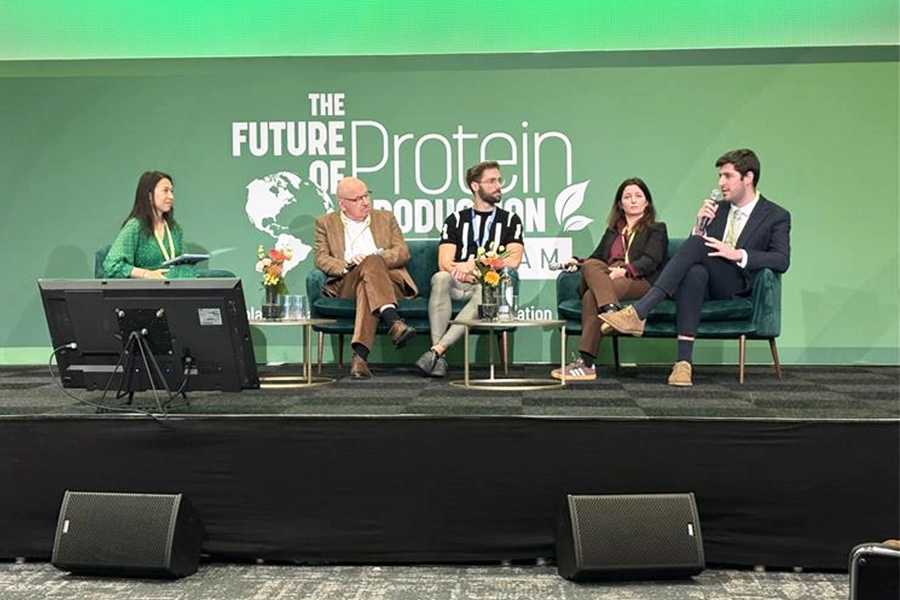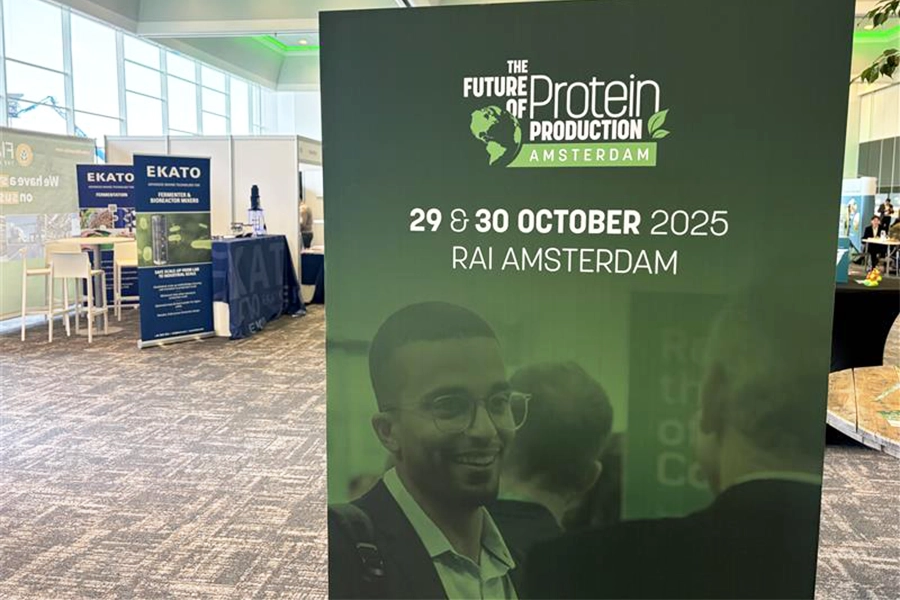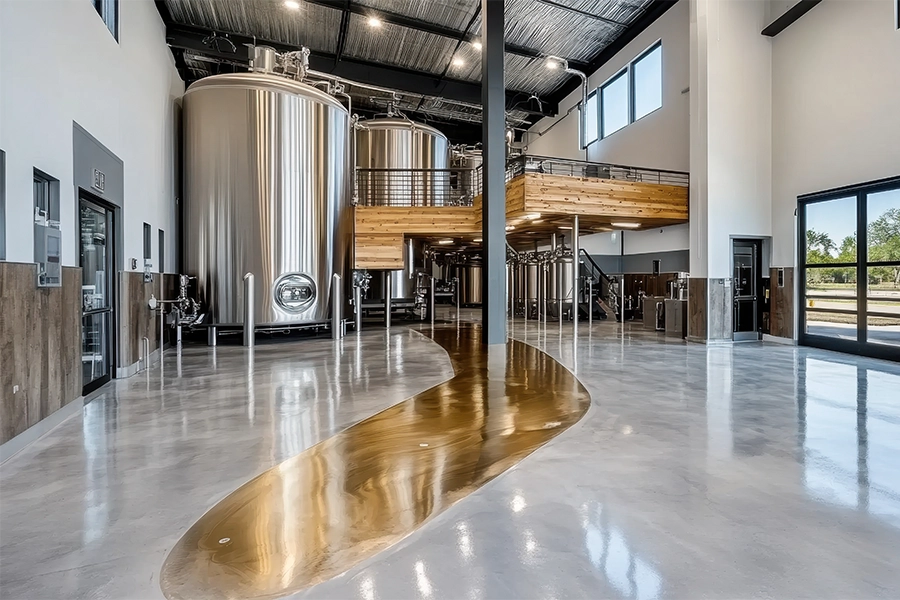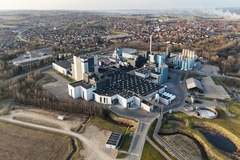
- Industry news
Industry news
- Category news
Category news
- Reports
- Key trends
- Multimedia
Multimedia
- Journal
- Events
- Suppliers
- Home
- Industry news
Industry news
- Category news
Category news
- Reports
- Key trends
- Multimedia
Multimedia
- Events
- Suppliers
The Future of Protein Production live: Precision fermentation dairy gains ground
Key takeaways
- The summit highlights how precision fermentation is advancing dairy production, with companies like Standing Ovation transforming low-value dairy byproducts into high-quality casein proteins.
- Vivici is focusing on producing dairy-identical proteins like beta-lactoglobulin and lactoferrin, targeting high-demand markets like sports nutrition and wellness.
- Companies are navigating regulatory hurdles for approval in various regions, while challenges include scaling production and securing industrial fermentation facilities.

Precision fermentation may be a key puzzle piece in the global protein transition, particularly in the dairy segment. The advanced technology is a headlining theme at The Future of Protein Production summit at the RAI Amsterdam in the Netherlands, October 29–30.
The summit brings together more than 1,000 delegates, over 100 speakers, and 60 exhibitors from across the sustainable protein ecosystem. It unites scientists, entrepreneurs, policymakers, and investors around one question: how to scale affordable, functional protein alternatives without relying on conventional meat and dairy?
Topics on stage range from EU regulation and consumer acceptance to financing biomanufacturing capacity and finding the right public language to describe “animal-free” dairy and meat.

Food Ingredients First speaks with two start-up companies presenting at the event, Standing Ovation and Vivici. The companies are gaining traction as they scale up their production of high-value dairy proteins. They share their stories and industry progress on the summit stage, which envisions precision fermentation as an enabler of circular economy models.
Turning low-value dairy into high-value dairy
In a historic milestone for France-based Standing Ovation, CEO Yvan Chardonnens reveals that the company recently achieved “the world’s first” large-scale industrial transformation of dairy whey into high-quality casein proteins.
“For decades, acid whey from cheese production has been largely underutilized. Our precision fermentation process now transforms these co-products into functional proteins at scale,” says Chardonnens. “Circular economy isn’t coming — it’s here.”
The validation, which was done in collaboration with the French dairy multinational Bel, is particularly novel because it uses sidestreams as the feedstock. That is a step up in sustainability from conventional methods that have relied on plant-based sources like corn or sugar.
 Precision fermentation takes center stage as a game-changer in creating bio-identical dairy proteins and meeting growing global demand for healthier food.Whereas precision fermentation has been used for decades to create vitamins and medical ingredients like insulin, this type of development showcases how the technology can be used to produce food ingredients.
Precision fermentation takes center stage as a game-changer in creating bio-identical dairy proteins and meeting growing global demand for healthier food.Whereas precision fermentation has been used for decades to create vitamins and medical ingredients like insulin, this type of development showcases how the technology can be used to produce food ingredients.
“Casein is one of the key proteins in milk, responsible for its unique textural and nutritional properties — particularly in cheese-making and high-protein formulations,” says Chardonnens. “Casein provides the essential texture, functionality, and taste of dairy.”
Looking ahead, Chardonnens is confident that precision fermentation will play a central role in enabling the production of bio-identical dairy proteins and functional ingredients at scale.
“Precision fermentation will be the new traditional fermentation,” he predicts.
Health ingredients in high demand
Netherlands-based Vivici, meanwhile, is focusing on high-quality sports and wellness applications for its dairy-identical ingredients produced through precision fermentation. The company, which currently sells its beta-lactoglobulin (Vivitein BLG) to US brands, observes that messaging around the ingredients tends to emphasize their functional and nutritional benefits, rather than the ethical or environmental attributes.
“Following the successful launch of Vivitein BLG, we are on track to launch our second ingredient, lactoferrin (Vivitein LF), by the end of the year,” says Daniel Bisley, CFO at the company.
“Lactoferrin is a bioactive protein designed to support fatigue, athlete recovery, and gut health.”
This upcoming addition to its portfolio underscores the demand for highly specialized dairy ingredients in growing global nutritional markets. Vivici is currently scaling its operations with production partners across multiple geographies.
The regulatory horizon
Another key theme at the summit is regulation and how to bridge it with industry development. Tilly Metz, a member of the European Parliament, discussed the policy framework needed to support plant-based and alternative proteins in the EU’s food transition on stage.
European approval for their dairy-identical ingredients is the next frontier for Standing Ovation and Vivici, who are taking their first market trials to the US, where the approval process is more straightforward. The Future of Protein Production highlights how precision fermentation unlocks new possibilities for dairy proteins, from sports nutrition to sustainable food solutions.
The Future of Protein Production highlights how precision fermentation unlocks new possibilities for dairy proteins, from sports nutrition to sustainable food solutions.
Vivici brought its BLG ingredient to the US last year during IFT First 2024. It says it is seeing strong demand for its ingredients, particularly from the rapidly growing Sports & Active Nutrition and Health & Wellness sectors in the US.
In fact, one of the biggest bottlenecks is physical capacity, Bisley notes. “As Vivici continues to scale its production, securing access to full-scale industrial precision fermentation facilities is a key challenge.”
At the same time, Vivici says it is advancing through the European Food Safety Authority (EFSA) Novel Foods process and has also submitted or is preparing dossiers in Canada, Singapore, the UK, and the UAE.
Standing Ovation is also working on regulatory approval worldwide. It has applied for self-affirmed GRAS (Generally Recognized As Safe) in the US, which is expected to come through at the beginning of next year. And Chardonnens says it will pursue EU Novel Foods regulatory approval by the end of this year.
More to come today
Furthering the regulatory conversation, Ermolaos Ververis from the EFSA will hold a talk today (Oct 30) on how to prepare dossiers for novel foods. He will explore how updated Novel Food guidance can streamline pre-market authorization and empower innovators to integrate safety considerations early into product development.
Beyond the technical milestones and regulatory conversations, investment and funding are key topics that will be highlighted through panel discussions today.
Representatives from Formo, Vivici, Revyve, Solvable Syndicate, and the Protein Brewery will share stories about how they successfully raised funds for their alt-protein products.










